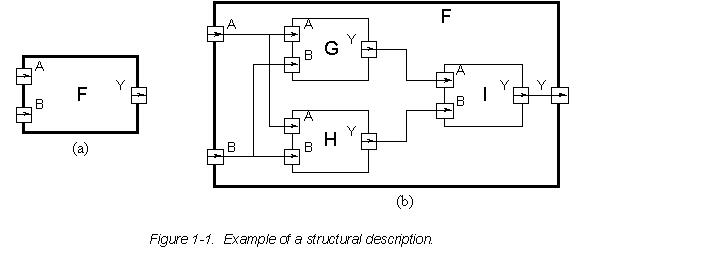A digital electronic system can be described as a module with inputs and/or outputs. The electrical values on the outputs are some function of the values on the inputs. Figure 1-1(a) shows an example of this view of a digital system. The module F has two inputs, A and B, and an output Y. Using VHDL terminology, we call the module F a design entity, and the inputs and outputs are called ports.

One way of describing the function of a module is to describe how it is composed of sub-modules. Each of the sub-modules is an instance of some entity, and the ports of the instances are connected using signals. Figure 1-1(b) shows how the entity F might be composed of instances of entities G, H and I. This kind of description is called a structural description. Note that each of the entities G, H and I might also have a structural description.